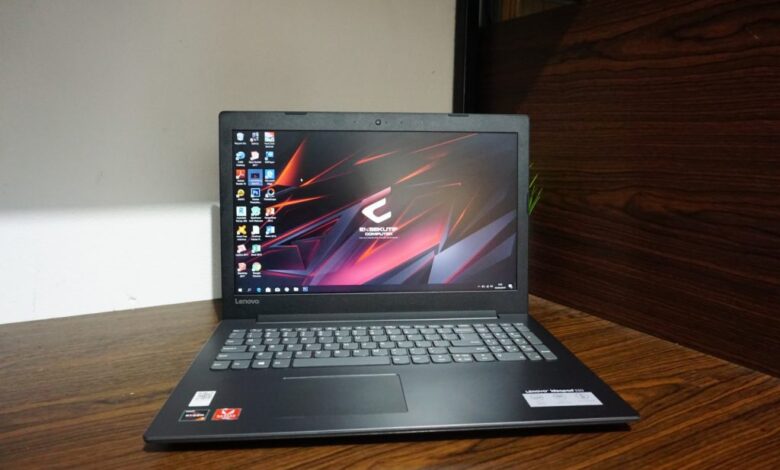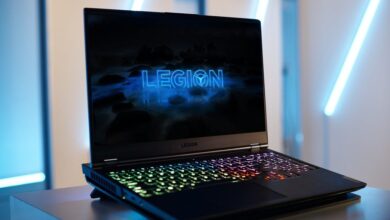Why do Content Creators Trust AMD Ryzen Processors for Rendering and Encoding?

Hardware selection becomes crucial for content creation, where creativity flourishes and deadlines are always approaching. Content producers need processors that offer outstanding and dependable performance for handling demanding design projects, encoding high-definition videos, and rendering intricate 3D scenes.
The reliable workhorse for a new generation of creators, the AMD Ryzen processor, is now available.
This in-depth article examines the factors that have led to AMD Ryzen processors becoming the preferred option for encoding and rendering jobs.
The Ascent of Ryzen Processors from AMD
With their 2017 launch, AMD Ryzen processors have come a long way, upending Intel’s decades-long hegemony in the CPU business. Based on the Zen microarchitecture, Ryzen CPUs offer higher IPC (Instructions Per Clock), more cores, and special features meant to meet the demands of modern workloads, like encoding and rendering.
The key elements that allow Ryzen to be used for encoding and rendering are broken down as follows:
- Cores for Zen and Zen+ The foundation of Ryzen CPUs is made up of these cores. It includes efficient designs that enable high clock speeds and great single-core performance, which is critical for rendering complex scenes and running demanding software.
- The Ryzen 3000 Series and More. Chiplet Introduction AMD implemented a chipset design in the Ryzen 3000 series and future generations. This modular strategy enables the integration of high-performance cores alongside dedicated I/O dies, resulting in improved performance and scalability.
- The cache structure. Ryzen processors have a strong cache hierarchy, which includes L1, L2, and L3. This multilayer caching technique allows for faster access to commonly used data, reducing latency and enhancing rendering performance.
- Two intelligent technologies, Precision Boost 2 (PB2) and Precision Boost Overdrive (PBO), adjust clock speeds dynamically in response to workload and thermal headroom. This enables Ryzen CPUs to give top performance when necessary while reducing power consumption during less demanding workloads.
Content producers will see real performance gains as a result of these architectural advancements.
Factors led to the AMD Ryzen processor’s preferred option for encoding and rendering job
1. The Benefit of Multi-Core Performance
Rendering and encoding operations are naturally multi-threaded, which means they can use many CPU cores to speed up processing. AMD Ryzen CPUs excel in this area, with a wide selection of multi-core configurations to meet a variety of budget and performance needs.
AMD provides plenty of cores and threads for content creators to handle even the most demanding workloads, whether they choose the entry-level Ryzen 5 series or the flagship Ryzen 9 portfolio.
2. Excellent Ratio of Cost to Performance
One of the primary reasons why multimedia creators prefer AMD Ryzen CPUs is their excellent price-to-performance ratio. Ryzen CPUs offer equivalent or perhaps higher multi-core performance at cheaper prices than Intel CPUs.
Content creators can build robust workstation systems without going over budget thanks to this affordability. It allows them to focus their spending on other critical components such as GPUs, RAM, and storage.
3. Enhanced Multi-threading Performance
AMD Ryzen CPUs use simultaneous Multi-Threading (SMT) technology, which allows each physical CPU core to run two threads at the same time. This practically doubles the number of accessible threads, hence enhancing multi-threaded performance and overall system responsiveness.
Content creators who use SMT can achieve significant gains in productivity and processing time reduction by using parallelized operations like encoding and rendering.
4. Designed with Creative Workloads in Mind
The Zen microarchitecture that powers AMD Ryzen processors is designed to handle a wide range of workloads, including multimedia production operations like rendering and encoding.
Ryzen CPUs provide great performance in both single- and multi-threaded applications, thanks to features like superior branch prediction, larger instruction and data caches, and reduced memory latency. This architectural efficiency leads to faster rendering speeds, better video playing, and seamless multitasking for content makers.
5. Wide-ranging Platform Interoperability
AMD Ryzen CPUs have broad platform compatibility, supporting a wide range of motherboard chipsets and socket combinations. Whether you choose common AM4 motherboards for low-cost projects or high-end TRX40 motherboards for enthusiast systems, AMD has something for everyone.
This versatility enables content makers to modify their workstation setups to meet individual requirements, ensuring compatibility with existing technology.
6. A Specific Rendering Solution: Ryzen Threadripper
AMD provides the Ryzen Threadripper series, a line of high-end desktop (HEDT) processors built for enthusiasts and professionals, to content makers with demanding processing demands. Ryzen Threadripper CPUs have unprecedented multi-core performance.
It makes them perfect for intense rendering, transcoding, and simulation applications. Additionally, Threadripper processors enable quad-channel DDR4 memory, offering adequate bandwidth for memory-intensive operations.
7. Smooth integration with Productivity Software
AMD Ryzen processors work flawlessly with a variety of productivity tools commonly used by content creators, such as Adobe Creative Suite, Autodesk Maya, Blender, and DaVinci Resolve. AMD collaborates closely with software developers to maximize performance and compatibility.
It ensures that Ryzen CPUs provide the greatest user experience across a wide range of apps. Ryzen CPUs have the power to meet deadlines and surpass expectations, whether you’re editing high-resolution videos, generating complex 3D scenarios, or encoding multimedia information.
8. Future-proofing with support for PCIe 4.0
AMD Ryzen processors enable PCIe 4.0, which allows for quicker data transfers and improved bandwidth for graphics cards, storage devices, and expansion cards. This forward-thinking feature enables content creators to fully utilize next-generation peripherals and storage options, increasing productivity and workflow efficiency.
Your workstation is ready for the demands of tomorrow’s content creation workflows with PCIe 4.0 support, whether you are working with large datasets or editing raw 8K footage.
9. Community Support and an Enthusiastic Environment
The enthusiast community strongly supports AMD Ryzen processors, with specialized forums, online communities, and resources accessible to assist content makers in optimizing their computers for peak performance.
If you’re looking for overclocking hints, troubleshooting guidance, or recommendations for compatible hardware, the AMD community has a wealth of knowledge and expertise to help you every step of the way.
Moreover, AMD actively collaborates with content producers via programs like the AMD Ryzen Creator Program, fostering creativity and teamwork within the creative industry.
Final Thoughts
When it comes to rendering and transcoding tasks, AMD Ryzen CPUs have shown to be a stable and dependable option. They are popular among content creators due to their large core counts, intelligent clock speeds, abundant cache, and affordable pricing.
As AMD continues to innovate, Ryzen CPUs’ future looks bright, allowing innovators to push the boundaries of their creative vision.
An AMD Ryzen CPU might be the missing piece in your toolbox if you are a content creator looking to maximize your output and unleash your creativity.




